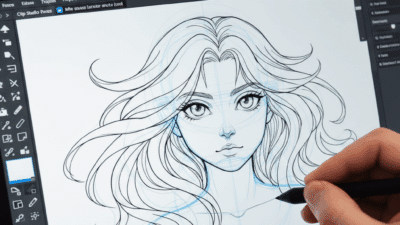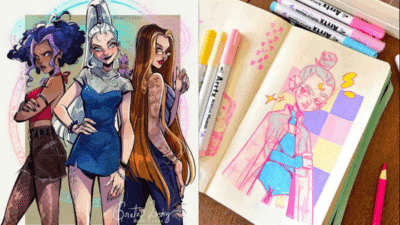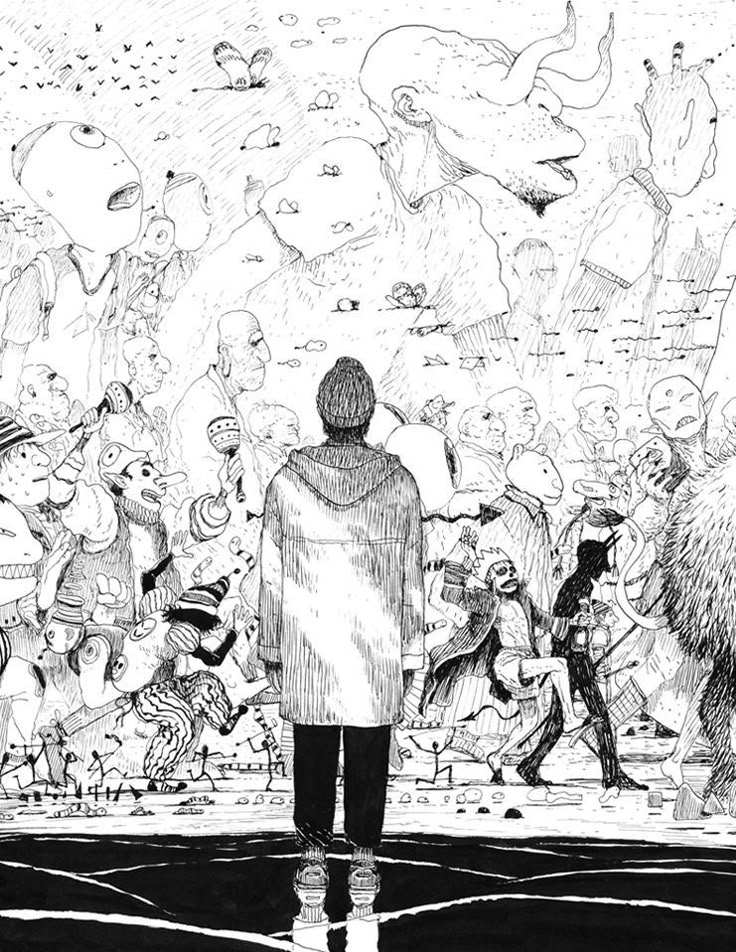
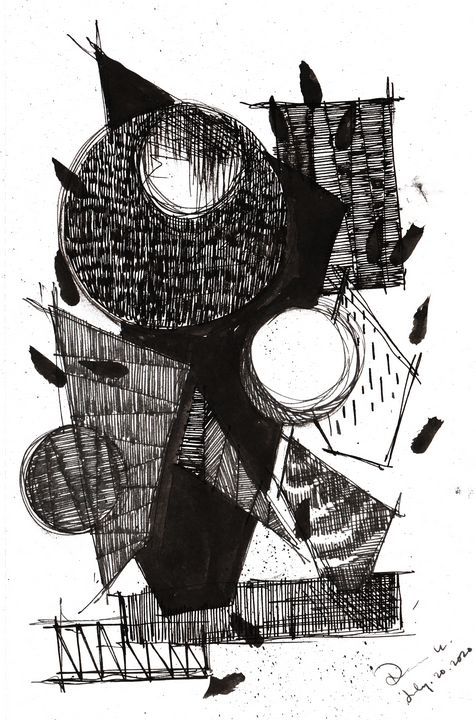
The world of art is vast and colorful, yet there exists a realm where the absence of color speaks volumes, where simplicity reigns supreme, and where the dance between light and shadow creates infinite possibilities. This realm is the captivating domain of black and white abstract drawings. Far from being simplistic, these monochromatic masterpieces offer a profound exploration of form, emotion, and perception, inviting viewers into a dialogue of pure visual language. They strip away the distraction of hue, compelling us to focus on the fundamental elements of line, shape, texture, and composition. This article delves into the intricate beauty and powerful impact of black and white abstract drawings, uncovering their enduring appeal, technical intricacies, and psychological resonance.
Pros and Cons
| Pros | Cons |
|---|---|
| – Timeless and universal aesthetic appeal. | – Limited color palette may feel restrictive to some artists. |
| – Emphasizes form, line, and texture without color distraction. | – Can be perceived as stark or cold by some viewers. |
| – Versatile, complements a wide range of interior styles. | – Requires strong compositional skills to maintain interest. |
| – Highly expressive, evokes deep emotional and psychological responses. | – Replicating subtle tonal variations can be challenging. |
| – Often more affordable for collectors than color art. | – Lacks the vibrancy and immediate appeal of color. |
The Enduring Allure of Monochromatic Expression
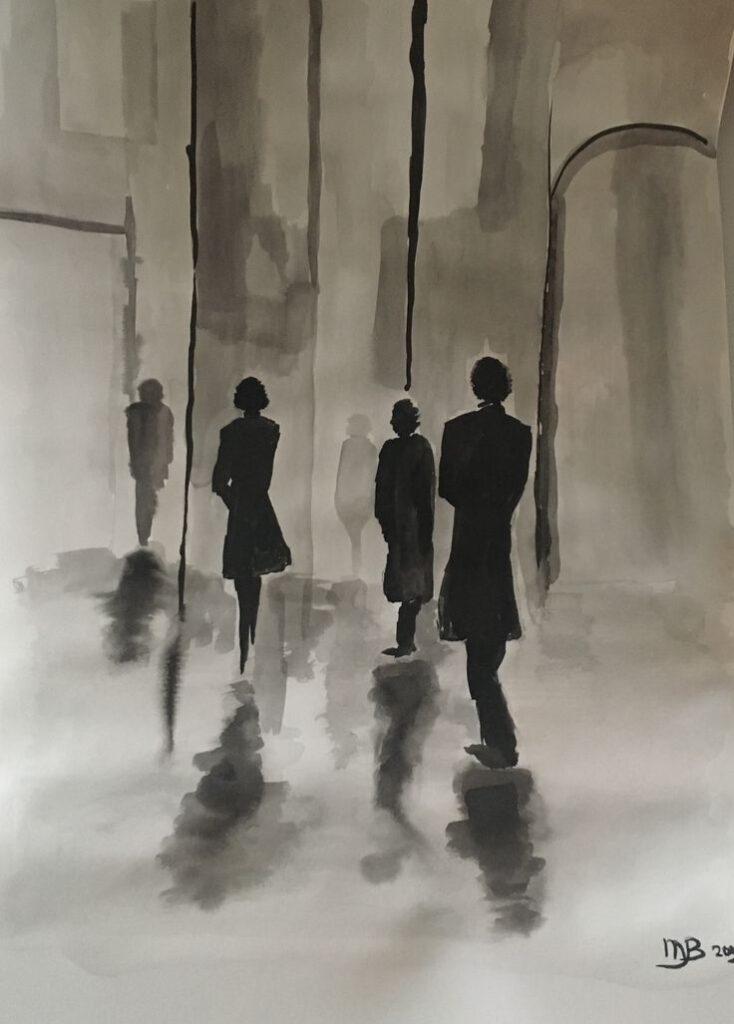
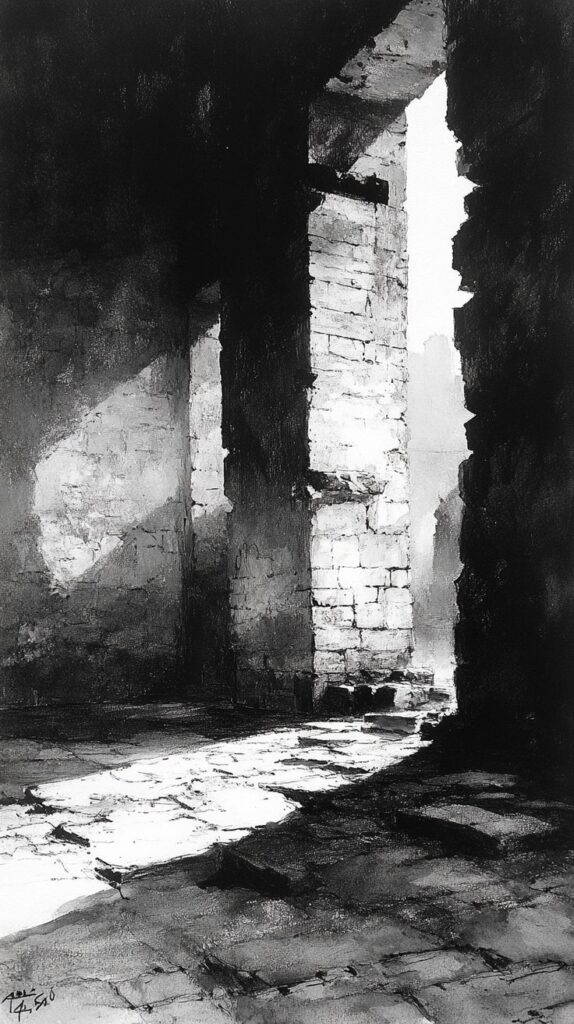
The power of black and white in art is undeniable. It’s a palette of stark simplicity, yet capable of profound complexity. In abstract drawing, this limited spectrum becomes a supercharger for creativity, pushing artists and viewers alike to engage with art on a deeper, more elemental level. By removing color, the artist forces the eye to focus on the structural integrity of the piece: the tension of a line, the weight of a shape, the rhythm of repetition, and the intricate play of positive and negative space.
Historically, black and white drawing has been a cornerstone of artistic practice, from master studies to preliminary sketches. Its roots in abstraction can be traced back to early 20th-century movements like Cubism and Futurism, which experimented with fragmenting reality and emphasizing form. Later, artists like Franz Kline, with his monumental black strokes against white canvases, epitomized the raw energy and emotional intensity achievable through this restricted palette. Willem de Kooning, too, often used black and white in his early abstract explorations to convey movement and emotion.
The monochromatic nature allows for a universal language, transcending cultural interpretations of color. A bold black line on white paper can convey dynamism, fragility, strength, or fluidity, without the added layer of chromatic associations. This makes black and white abstract drawings incredibly versatile, capable of fitting into diverse aesthetic environments, from minimalist apartments to industrial lofts. They serve as sophisticated focal points, drawing the eye and inviting prolonged contemplation.
Deconstructing Abstract Art: What Makes it Abstract?
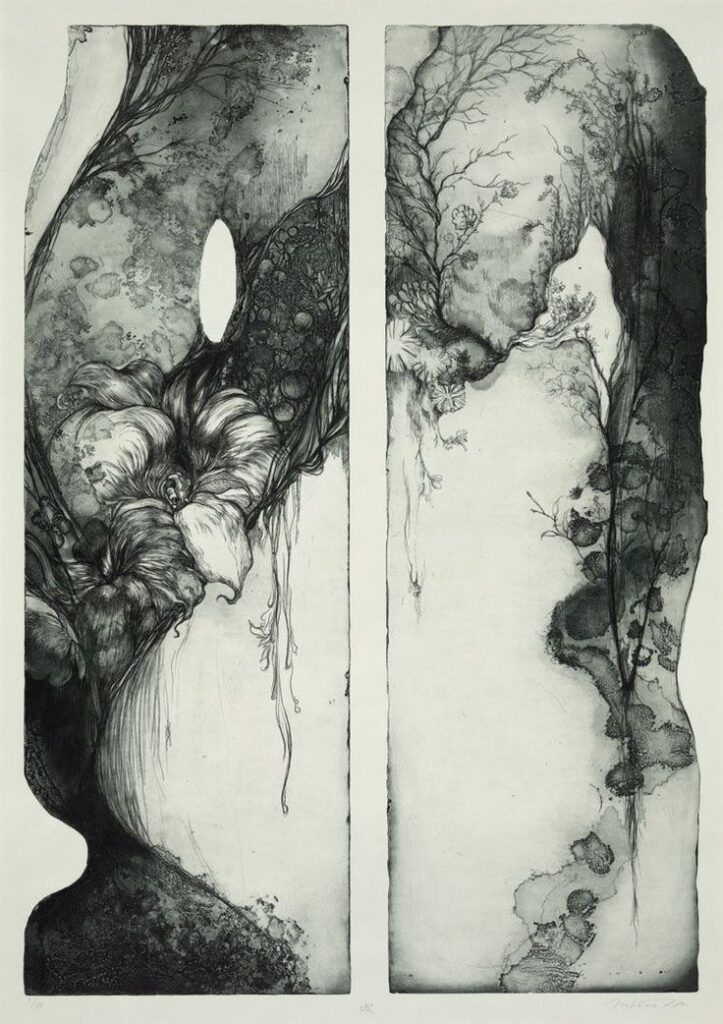

Before diving deeper into the specifics of black and white, it’s crucial to understand the essence of abstract art itself. Abstraction, in its broadest sense, means to “draw away from” or “separate.” In art, this translates to works that do not attempt to represent external reality accurately. Instead, abstract artists use visual language of shape, form, color, and line to create a composition which may exist with a degree of independence from visual references in the world.
In black and white abstract drawings, this principle is intensified. The absence of color means the viewer is left solely with the interplay of value (lightness and darkness), line, and shape. This forces a direct confrontation with the artist’s formal choices.
Consider the fundamental elements of design:
- Line: Can be thick, thin, broken, continuous, straight, curved, jagged. It defines edges, creates movement, and builds structure.
- Shape: Geometric (squares, circles) or organic (free-form). Shapes create areas of interest and define positive and negative space.
- Form: Implies three-dimensionality, often created through shading or overlapping shapes.
- Space: The area an object occupies (positive space) and the area around it (negative space). In abstract work, negative space is as important as positive space.
- Value: The lightness or darkness of a tone. In black and white, this spectrum from pure white to pure black, including all shades of grey, is paramount for creating depth, contrast, and visual hierarchy.
- Texture: The perceived surface quality of a work. This can be actual (rough paper) or implied (through varied lines or marks).
When these elements are manipulated in black and white, the focus shifts entirely to their inherent qualities and relationships. A stark black shape against a white background becomes a powerful statement of presence and absence. A series of swirling grey lines evokes movement and fluidity without needing a specific object to represent. The viewer becomes an active participant, interpreting the visual cues based on their own experiences and perceptions, making each encounter with the art uniquely personal.
The Psychology of Contrast: Black, White, and the Human Mind

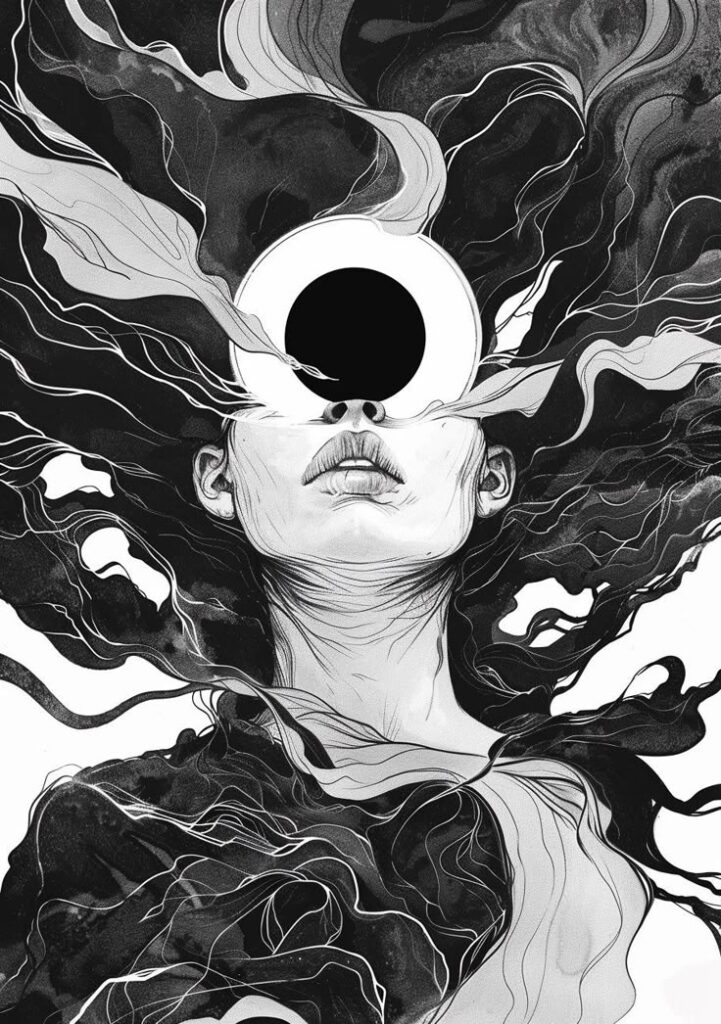
The pairing of black and white holds profound psychological and symbolic significance across cultures. Black is often associated with mystery, power, formality, elegance, and the unknown, while white symbolizes purity, innocence, clarity, simplicity, and new beginnings. When these two opposing forces meet in an abstract drawing, they create a dynamic tension that deeply resonates with the human psyche.
The high contrast intrinsic to black and white art immediately grabs attention. Our brains are wired to detect contrast as a fundamental aspect of visual information processing. This makes black and white abstract pieces incredibly impactful, often conveying a sense of drama, focus, and intensity that might be diluted by a multi-colored palette. The starkness can evoke feelings of minimalism and clarity, cutting through visual clutter to deliver a direct message.
Moreover, the absence of color can sometimes elicit a more introspective and analytical response. Without the emotional cues typically provided by color (e.g., warm reds, cool blues), the viewer is left to interpret the shapes and lines in a more primal way. This can lead to a deeper engagement, as the mind works to find patterns, meaning, or emotional resonance within the composition. The interplay of light and shadow, inherent in black and white drawing, mimics the fundamental conditions of our visual experience of the world, making these compositions feel both timeless and deeply familiar, even in their abstraction. The strategic use of white space, for instance, can evoke a sense of calm or expansive thought, highlighting the importance of what isn’t there. This concept is beautifully explored in the design principle of The Importance of White Space in Design: Less is More.
Essential Techniques for Black and White Abstract Drawing
Creating compelling black and white abstract drawings requires a deep understanding of technique and an adventurous spirit for experimentation. The limited palette necessitates mastery of value, line, and texture to achieve complexity and visual interest.
Mediums of Choice
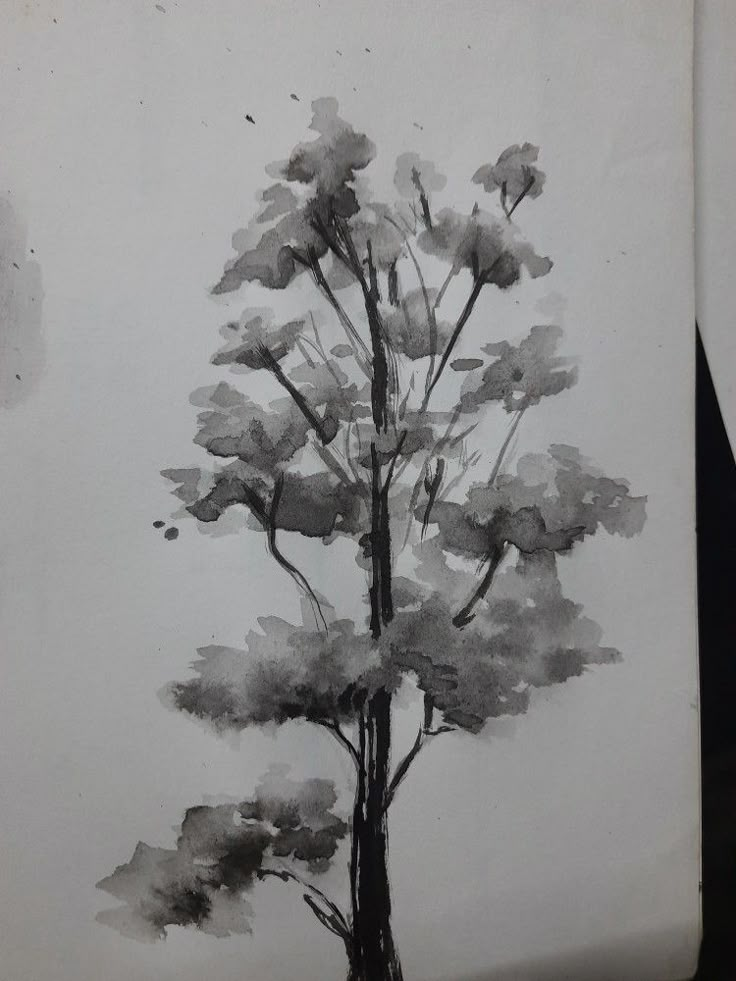
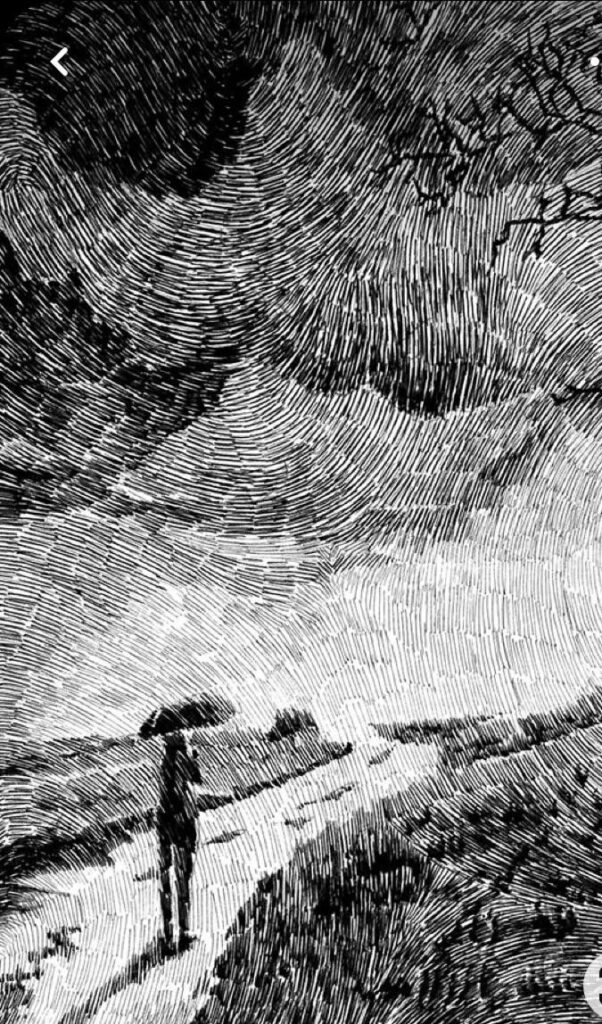
Artists employ various mediums, each offering unique qualities:
- Graphite Pencils: Ranging from hard (H) to soft (B), they offer incredible versatility for subtle shading, fine lines, and rich darks.
- Charcoal: Known for its deep black and ability to create velvety textures and broad strokes. It’s excellent for expressive, gestural work.
- Ink (Indian Ink, Sumi Ink): Provides the starkest contrast, from solid black to delicate washes when diluted. Pens (nib, brush, technical) offer precise control or expressive freedom.
- Markers: Offer consistent, opaque black lines and shapes, ideal for graphic, bold compositions.
- Pastels (Black and White): Provide soft, blendable qualities, good for atmospheric effects and subtle transitions.
Mastering Line Work
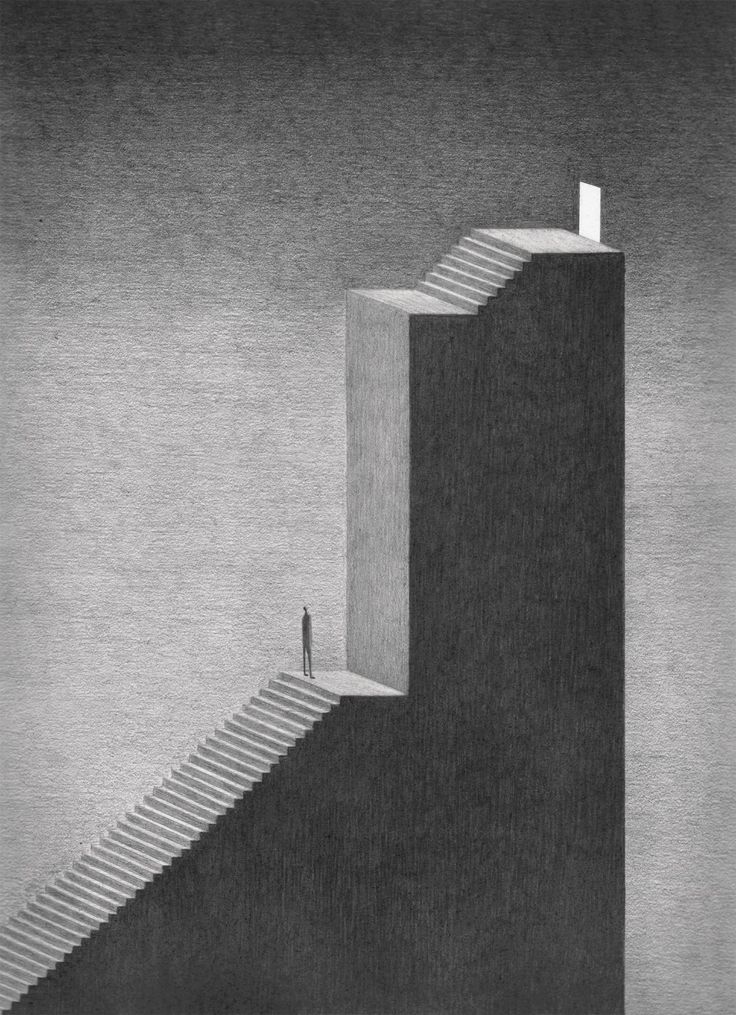
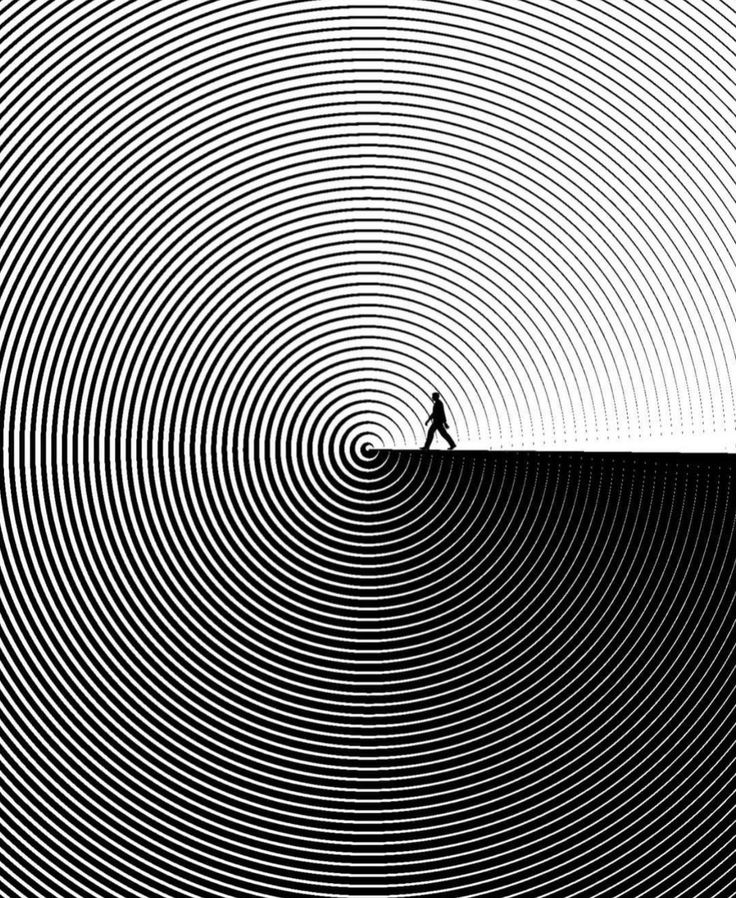
Line is perhaps the most fundamental element in black and white drawing. Its variations create character and emotion:
- Varying Thickness: From hair-thin to brush-thick, line weight dictates visual hierarchy and impact.
- Fluidity vs. Sharpness: Smooth, continuous lines convey grace; jagged, broken lines express tension or energy.
- Direction and Rhythm: Vertical lines suggest stability, horizontal lines peace, diagonal lines movement. Repetitive lines create rhythm and pattern.
Shading and Hatching Techniques
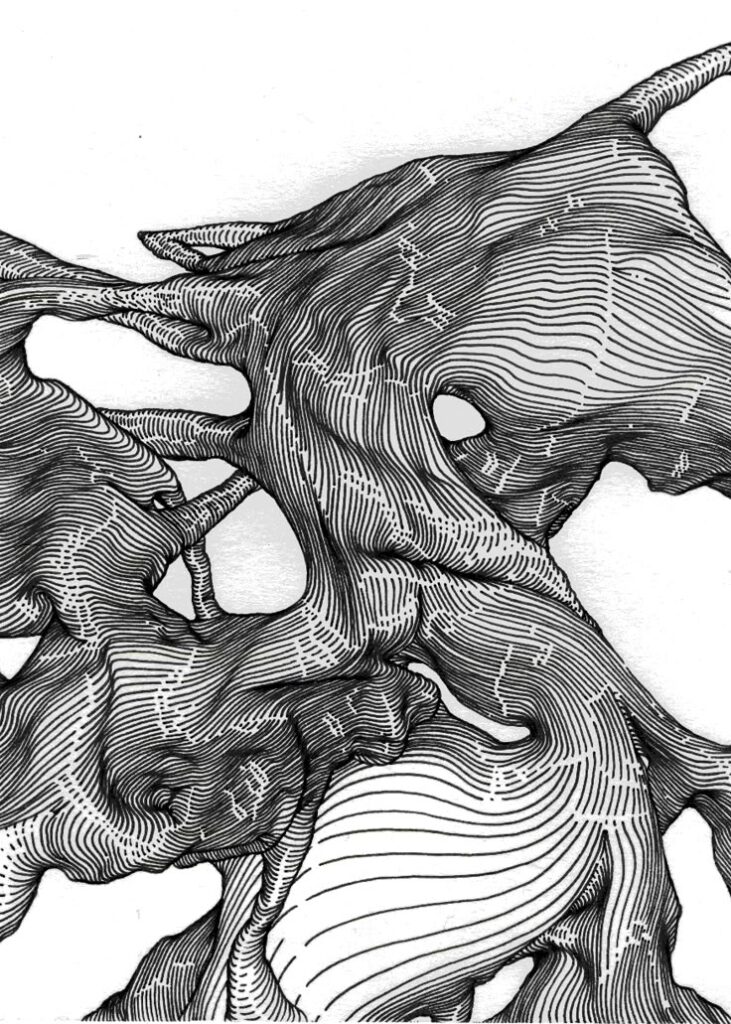
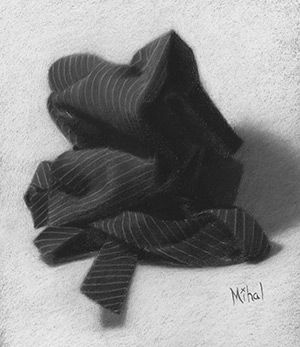
Since there’s no color, value becomes paramount for creating depth and form:
- Hatching: Parallel lines to create tone. Closer lines mean darker tone.
- Cross-hatching: Overlapping sets of parallel lines, creating richer, deeper values.
- Stippling: Using dots to create tone. Density of dots determines darkness.
- Scumbling: Circular or scribbled marks to build up tone and texture.
- Blending: Using a finger, tortillon, or cloth to smooth out graphite or charcoal, creating soft transitions.
- Eraser Work: Not just for mistakes, erasers can be tools for drawing, creating highlights and textures within dark areas.
Compositional Strategies


A strong composition is vital to prevent black and white abstract drawings from appearing flat or chaotic:
- Balance: Achieving visual equilibrium. This can be symmetrical (formal) or asymmetrical (dynamic).
- Focal Point: An area that draws the eye first. This can be created by high contrast, unique shape, or dense detail.
- Negative Space: The empty space around and between forms. Thoughtful use of negative space can define positive forms and add to the overall balance and tension of the composition.
- Repetition and Pattern: Repeating elements can create rhythm and unity.
- Movement: Guiding the viewer’s eye through the artwork, often with lines or progressive changes in value/shape.
Experimentation is key. Don’t be afraid to try different marks, combine techniques, and let intuition guide your hand. Many artists find inspiration in aesthetic drawing ideas to kickstart their abstract journey.
Iconic Artists and Movements
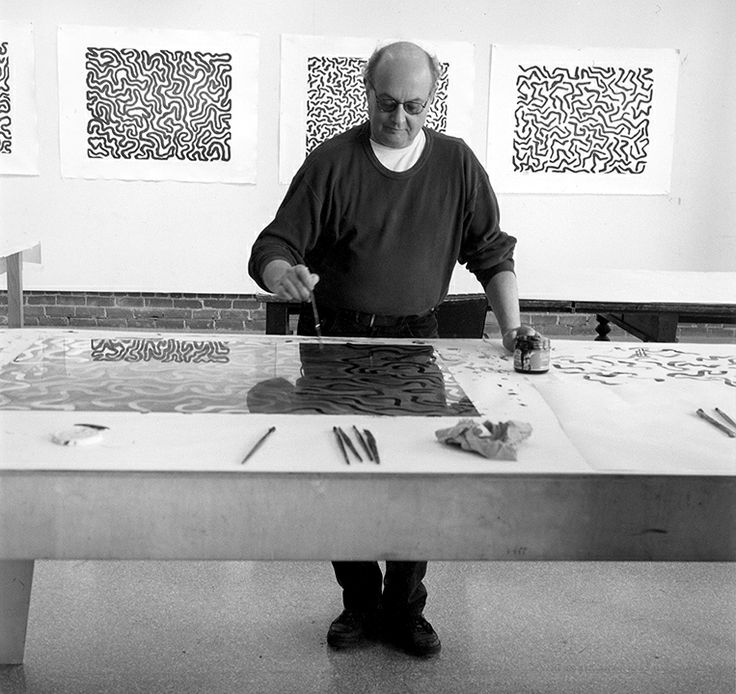
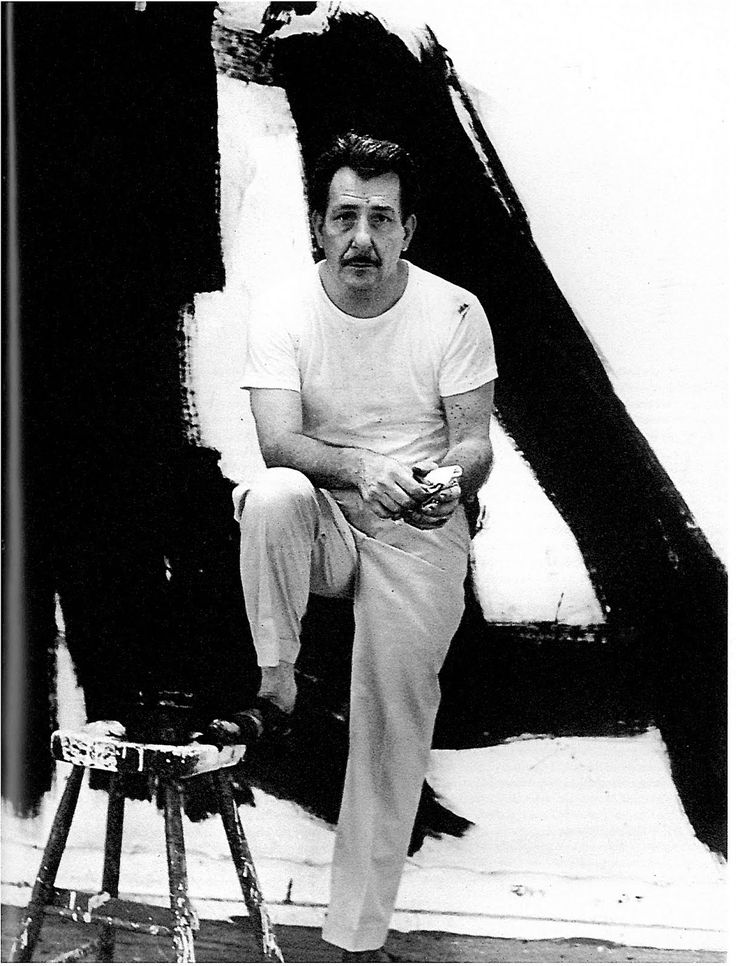
Black and white abstraction has been a powerful tool for numerous artists across various movements. Their contributions have shaped our understanding and appreciation of this art form.
Franz Kline (1910–1962): A leading figure in Abstract Expressionism, Kline is renowned for his large-scale, dynamic black brushstrokes on white canvases. His work often evokes industrial landscapes or calligraphic gestures, characterized by raw energy and intense emotional power. His process was spontaneous yet deliberate, stripping down form to its absolute essentials.
Sol LeWitt (1928–2007): A pioneer of Minimalism and Conceptual Art, LeWitt explored systematic, geometric abstraction. While he used color, his black and white wall drawings, created according to precise instructions, emphasize line, grid structures, and permutations of simple forms. His work challenged traditional notions of authorship and materiality, focusing on the idea behind the art.
Agnes Martin (1912–2004): Known for her minimalist paintings characterized by grids and subtle variations in line and wash. Her early work, often in black, white, and muted tones, meticulously explored the nuances of hand-drawn lines, evoking a sense of quiet contemplation, balance, and transcendental beauty. Her art is a testament to the profound impact of subtle, repetitive marks.
Piet Mondrian (1872–1944): While famous for his primary color grids, Mondrian’s early abstract work in black and white, particularly his “plus and minus” compositions, laid the groundwork for his Neoplasticism. These pieces, focusing on horizontal and vertical lines, demonstrate his rigorous pursuit of universal harmony through basic geometric forms and the interplay of opposites.
These artists, among many others, demonstrate the incredible range and depth achievable within the seemingly limited palette of black and white. They leveraged contrast, repetition, scale, and various mark-making techniques to convey complex ideas, emotions, and philosophical inquiries, proving that a lack of color can indeed lead to a richness of expression.
Finding Inspiration and Developing Your Unique Style
The journey into black and white abstract drawing is deeply personal. Finding inspiration is the first step, followed by the diligent practice of developing a visual language that is uniquely yours.
Sources of Inspiration
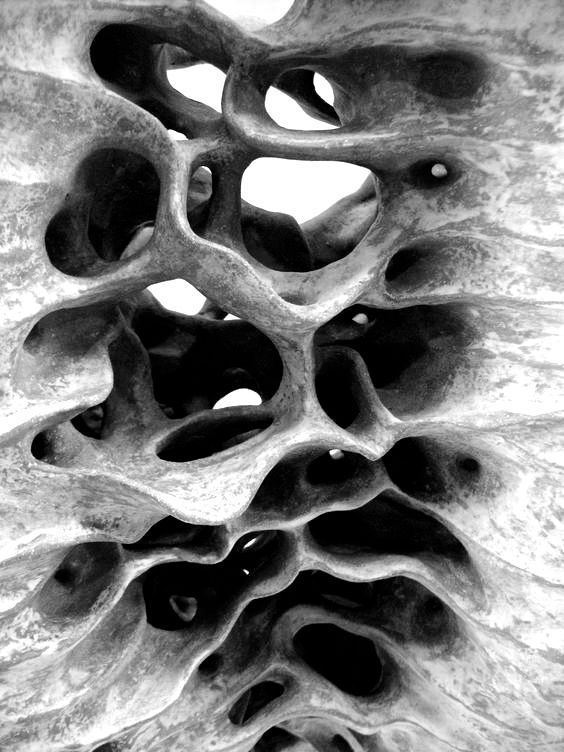
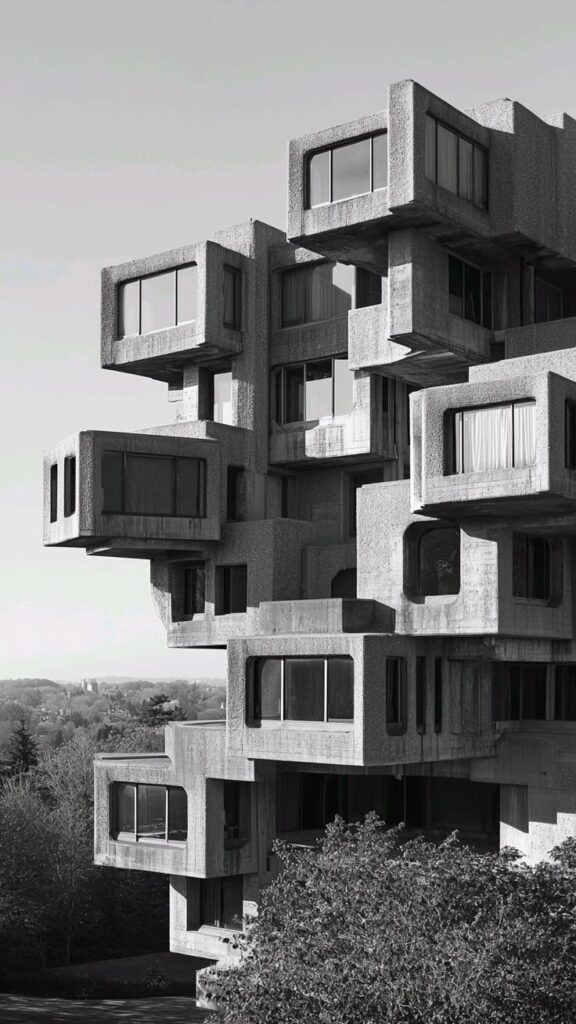
Inspiration can emerge from countless places:
- Nature: Observe the intricate patterns of tree bark, the flow of water, the jagged edges of mountains, or the delicate structure of a spiderweb. Even shadows cast by objects can spark ideas for abstract forms.
- Urban Landscapes: The geometry of buildings, the tangled lines of power cables, the textures of concrete and brick, and the movement of traffic can be powerful abstract generators.
- Music and Sound: Translate the rhythm, harmony, and dissonance of music into visual marks and compositions.
- Emotions and Inner States: Abstract art is a potent vehicle for expressing feelings. Let anger, joy, sorrow, or peace guide your hand without the need for literal representation.
- Everyday Objects: Look at familiar items from unusual angles. Deconstruct their forms and textures in your mind.
- Art History: Study the masters of abstraction. Analyze how they used line, shape, and value. Don’t copy, but learn from their approaches.
Developing Your Personal Visual Language
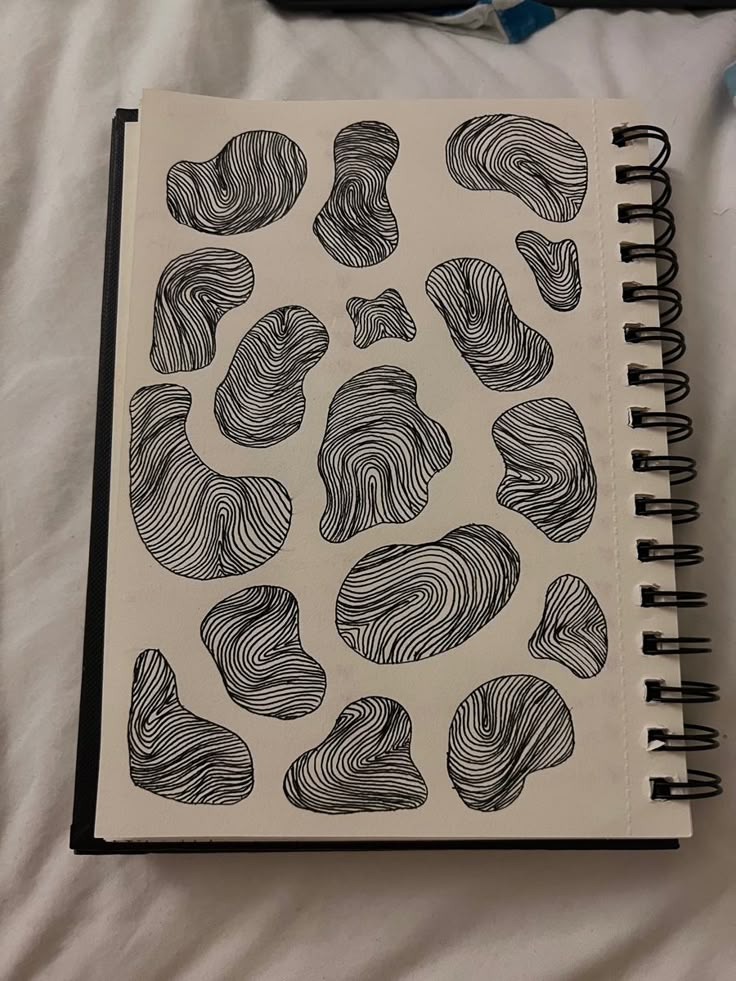

This is where practice, experimentation, and self-reflection come into play.
- Sketch and Doodle Constantly: Keep a sketchbook. Fill it with quick, uninhibited marks, lines, and shapes. Don’t aim for perfection; aim for exploration.
- Experiment with Mediums: Try graphite, charcoal, ink, markers. See how each feels and what kinds of marks it naturally produces for you.
- Focus on Mark-Making: Pay attention to the quality of your lines. Are they aggressive, delicate, hesitant, confident? How can you vary them?
- Play with Composition: Don’t be afraid to crop, rotate, or rearrange elements. Use thumbnail sketches to test different layouts.
- Embrace Accidents: Sometimes the most interesting results come from unexpected smudges or drips. Integrate them into your process.
- Seek Feedback (Selectively): Share your work with trusted peers or mentors. Constructive criticism can offer new perspectives.
- Reflect and Refine: Regularly review your work. What elements are recurring? What patterns are emerging? What feels authentic to you?
Developing a unique style is an ongoing process of discovery. It’s about finding your artistic voice through repeated exploration and a willingness to push boundaries. Just as one might create a personal aesthetic style in fashion, artists develop a distinct aesthetic through their work.
Integrating Black and White Abstract Drawings into Modern Spaces
Beyond their artistic merit, black and white abstract drawings are incredibly versatile pieces for interior design. Their timeless aesthetic and neutral palette make them ideal for enhancing a variety of modern spaces without clashing with existing decor.
Art as a Design Element
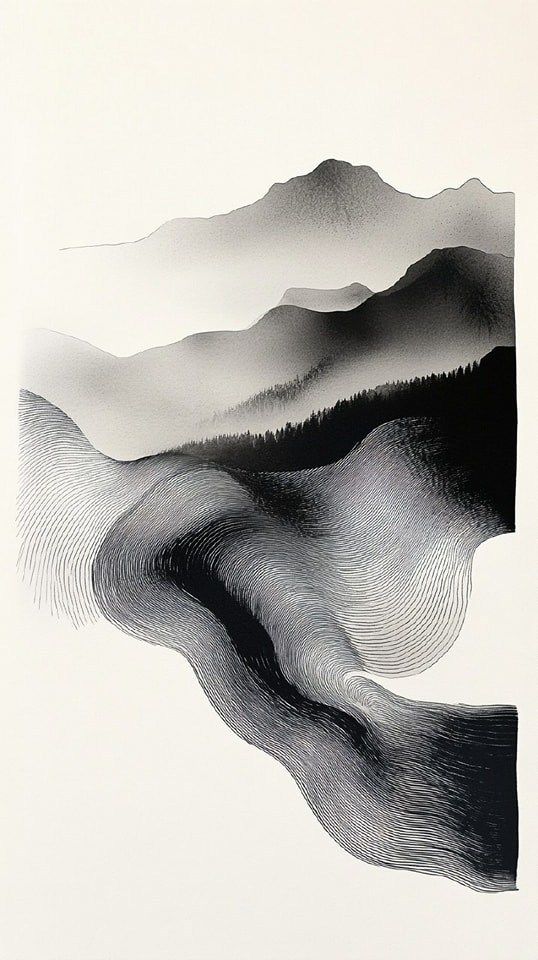

- Creates a Focal Point: A large-scale black and white abstract piece can instantly become the anchor of a room, drawing the eye and setting the tone. Its graphic nature commands attention without overwhelming the space with color.
- Complements Diverse Styles:
- Minimalist: The inherent simplicity and clean lines of black and white abstraction perfectly align with minimalist principles. They add depth and interest without introducing clutter.
- Industrial: The stark contrast and often raw energy of these drawings complement the exposed materials and utilitarian aesthetic of industrial design.
- Contemporary/Modern: They fit seamlessly into contemporary spaces, offering a sophisticated and intellectual touch.
- Bohemian/Eclectic: Even in more vibrant, eclectic settings, a black and white piece can provide a grounding element, a moment of visual calm amidst a riot of patterns and colors.
- Adds Sophistication and Depth: The intellectual and emotional depth inherent in abstract art elevates a space. Black and white pieces, in particular, often convey a sense of gravitas and refined taste.
- Enhances Texture: While lacking color, these drawings highlight textural elements in a room. A textured abstract drawing can play off a plush rug, a rough-hewn wooden table, or smooth metallic accents.
Considerations for Framing and Display
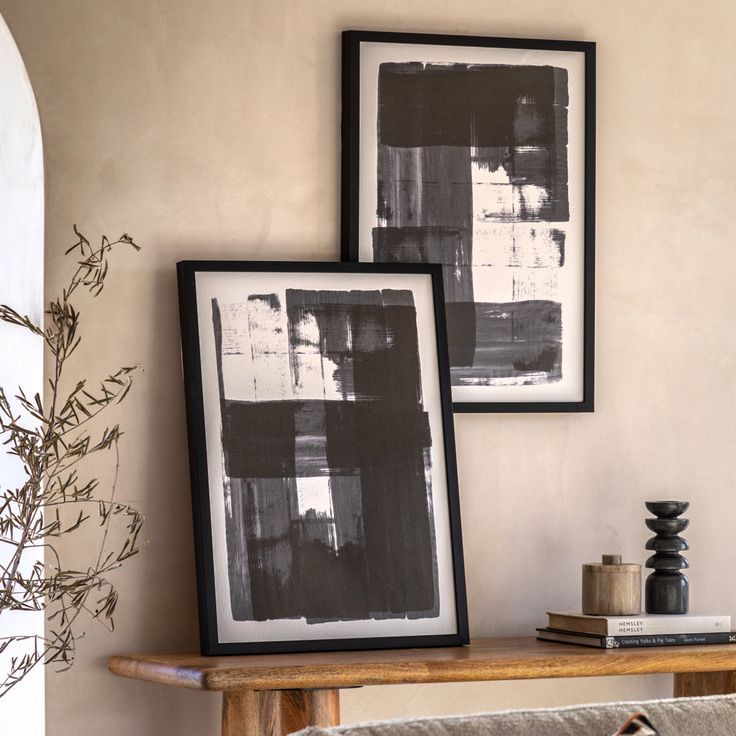
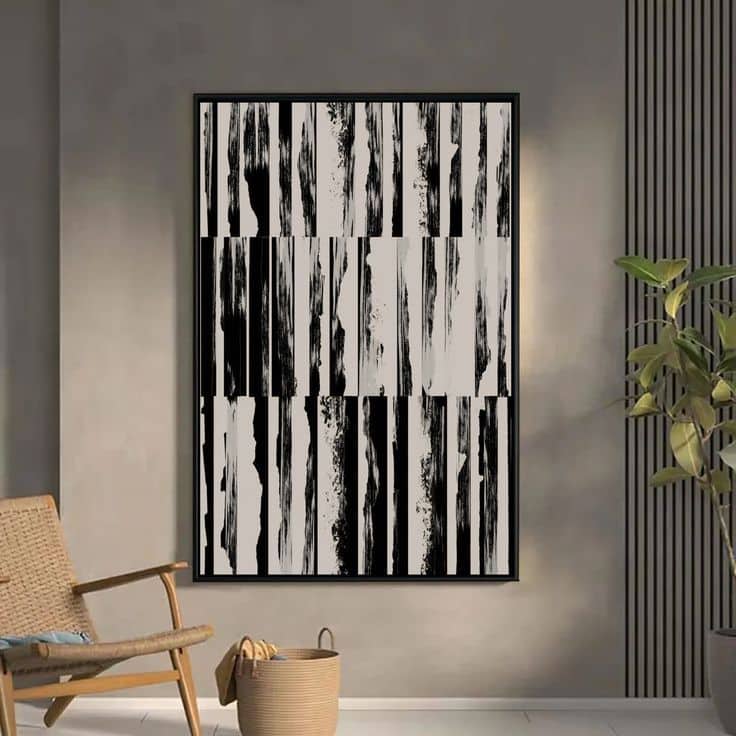
- Framing: Simple, clean frames (black, white, or natural wood) are generally best to let the artwork speak for itself. A wide white mat can create breathing room and draw the eye inward.
- Placement: Consider the scale of the artwork relative to the wall and furniture. A single large piece can make a dramatic statement, while a gallery wall of smaller, complementary abstracts can create a dynamic display.
- Lighting: Proper lighting can dramatically enhance a black and white drawing, highlighting its textures and contrasts. Spotlights or picture lights can create dramatic shadows and emphasize depth.
- Pairing with Color: While monochromatic, these drawings interact beautifully with pops of color in a room, making those colors appear more vibrant. They provide a calm backdrop that allows other elements to shine. For instance, a black and white abstract can be a stunning addition to a space designed for comfort and personality, as explored in articles like How to Make Room for Comfort Without Sacrificing Your Home’s Personality.
Beyond the Canvas: Digital Black and White Abstraction
The advent of digital tools has opened new frontiers for black and white abstract drawing, democratizing the art form and expanding its possibilities. Artists can now create intricate, dynamic, and endlessly editable compositions without traditional mediums.
Digital Tools and Software
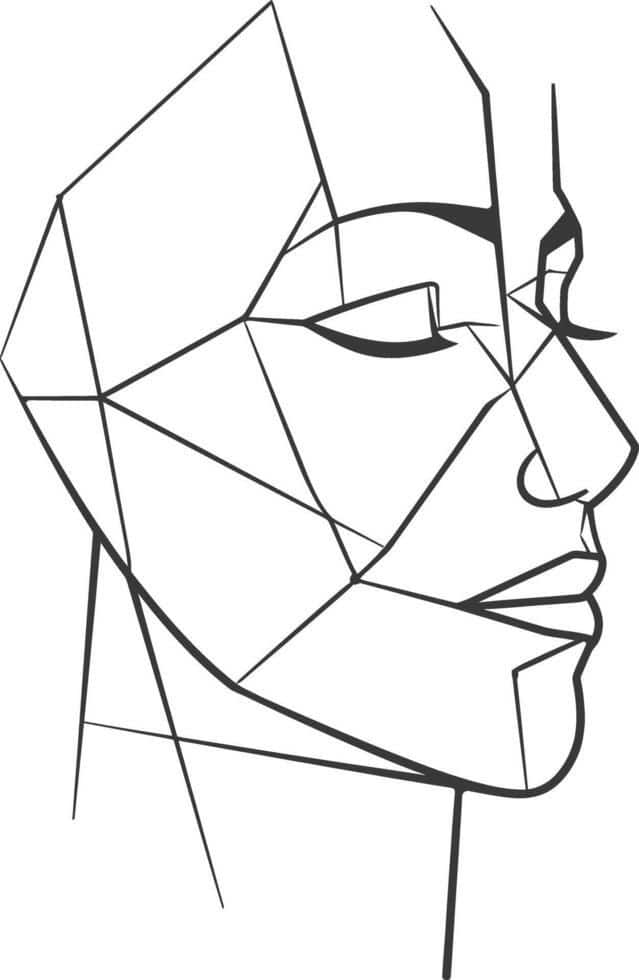

Software like Adobe Photoshop, Illustrator, Procreate, Clip Studio Paint, and even simpler drawing apps on tablets provide a vast array of brushes, textures, and layers.
- Vector Graphics (Illustrator): Ideal for crisp, clean lines, geometric shapes, and scalable artwork that maintains resolution at any size.
- Raster Graphics (Photoshop, Procreate): Offers a more traditional drawing feel with digital brushes that mimic charcoal, graphite, and ink, allowing for organic textures and nuanced shading.
Advantages of Digital Abstraction
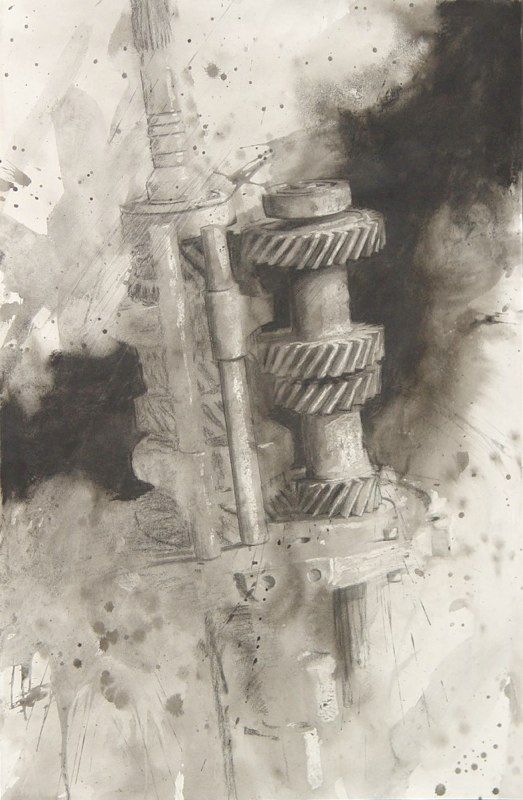
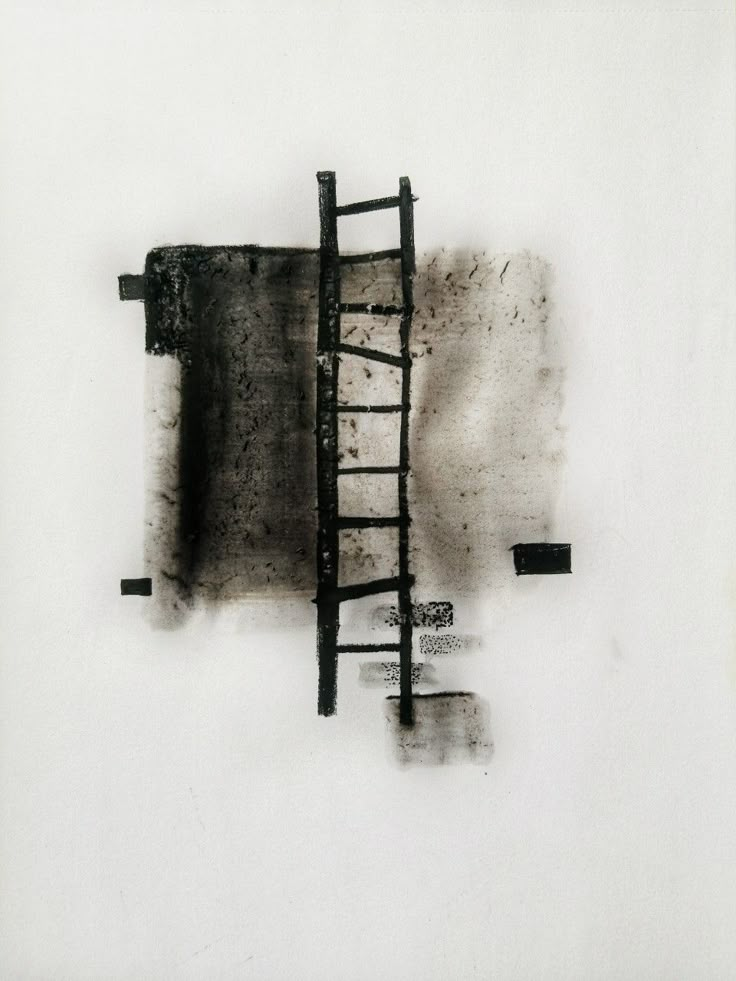
- Experimentation Without Waste: Artists can endlessly experiment with different compositions, marks, and values without consuming physical materials.
- Undo/Redo Functionality: The ability to instantly correct mistakes or revert to previous stages encourages bolder experimentation.
- Layering: Digital layers allow for complex compositions where elements can be independently manipulated, moved, or altered.
- Global Access and Distribution: Digital artwork can be easily shared, sold, and exhibited online, reaching a global audience.
- Dynamic Possibilities: Digital platforms allow for animated abstractions or interactive pieces that respond to user input, pushing the boundaries of what a “drawing” can be.
Traditional Principles in a Digital Realm

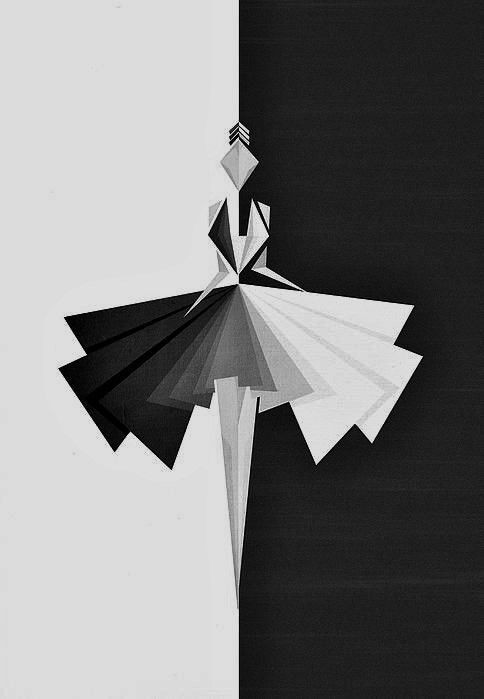
Despite the technological shift, the core principles of black and white abstract drawing remain paramount. Understanding value, line, shape, and composition is just as crucial in a digital environment. Artists still grapple with creating visual tension, guiding the viewer’s eye, and evoking emotion through a monochromatic palette. The tools change, but the artistic intent and fundamental principles endure. The digital space offers a new canvas, where the same deep appreciation for contrast and form can flourish, often with stunning and innovative results.
The Therapeutic Aspect of Abstract Drawing
Beyond its aesthetic and intellectual appeal, engaging in black and white abstract drawing offers significant therapeutic benefits. The act of creating, especially in an abstract manner, can be a powerful tool for mindfulness, self-expression, and stress reduction.
Mindfulness and Focus
When an artist immerses themselves in the process of drawing, particularly abstractly, they often enter a state of flow. This is a mental state in which a person performing an activity is fully immersed in a feeling of energized focus, full involvement, and enjoyment in the process of the activity. In abstract drawing, this focus is directed at the interplay of lines, shapes, and values, rather than the pressure of realistic representation. This singular focus on the present moment can act as a form of meditation, quieting the “noise” of everyday thoughts and promoting mental clarity.
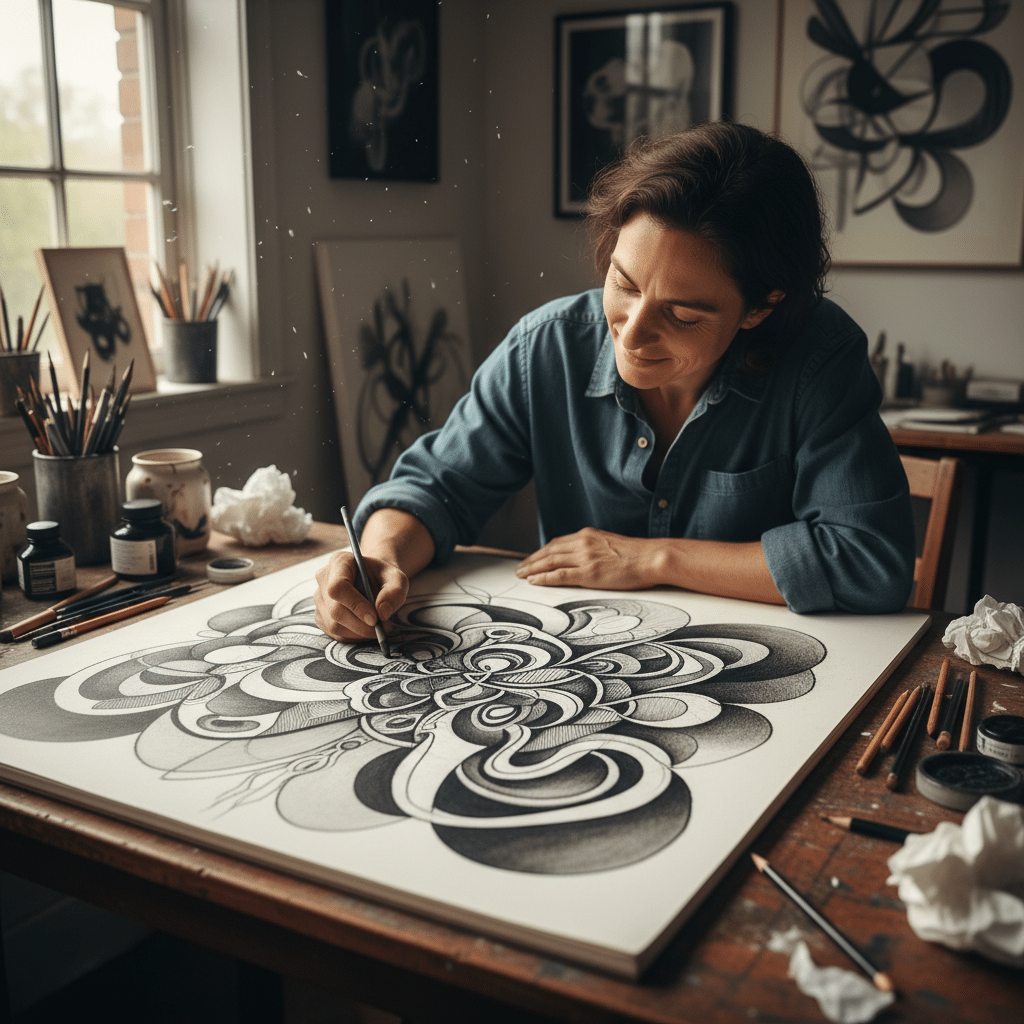
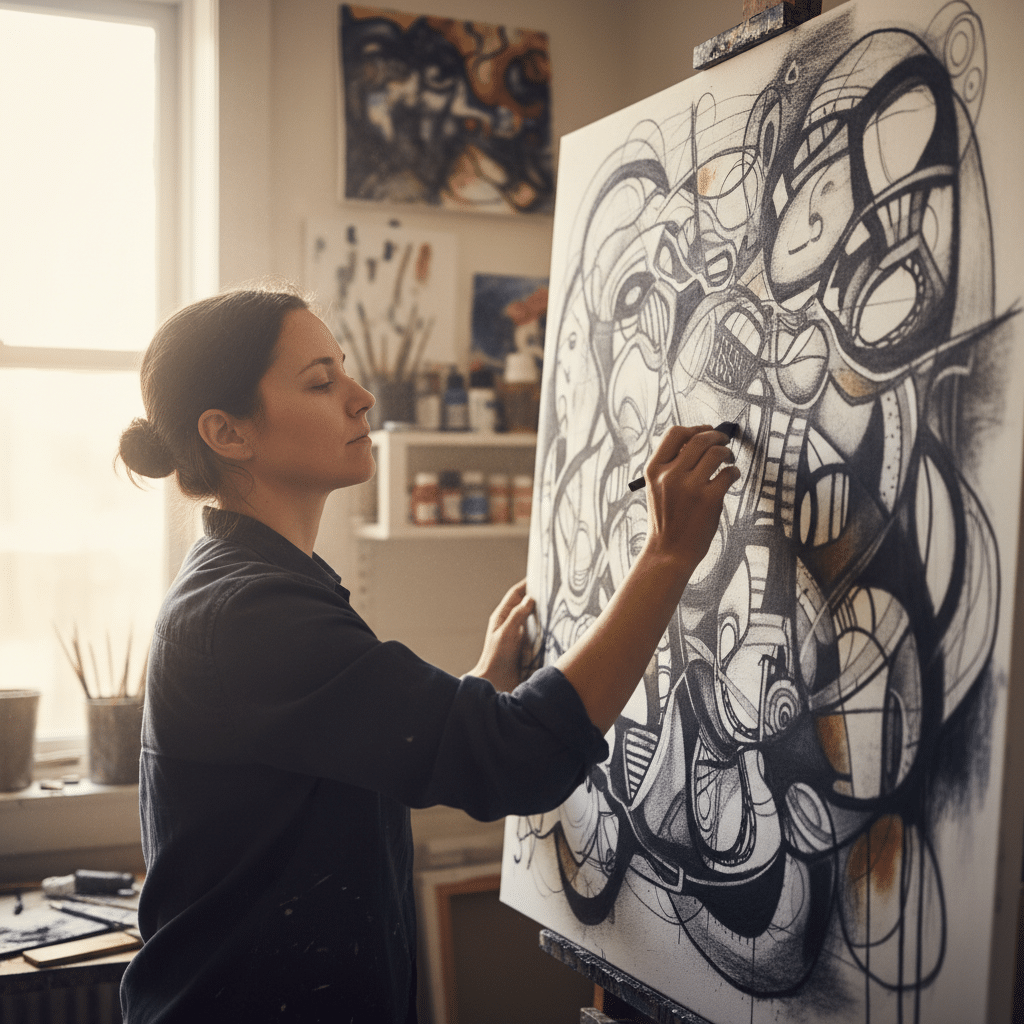
Stress Reduction
The creative process, free from the constraints of expectation or judgment, can be incredibly cathartic. Abstract drawing allows for a non-verbal release of emotions and thoughts. The deliberate manipulation of simple elements like black and white can be grounding, providing a sense of control and calm. Research continually supports the idea that engaging in creative activities reduces cortisol levels, the body’s primary stress hormone. The repetitive motions of drawing, hatching, or stippling can be inherently soothing.
Self-Expression Without Representation
One of the greatest freedoms of abstract art is the ability to express complex emotions or internal states without the need for literal depiction. An artist doesn’t need to “draw a sad person” to convey sadness; instead, they might use heavy, downward-pulling lines, dense black shapes, or fractured forms. This removes the pressure of technical accuracy, allowing for a more authentic and uninhibited expression of the self. The black and white palette, in particular, can amplify this, as it strips away the potential “distraction” of color, allowing the raw emotional force of the marks to come to the forefront.

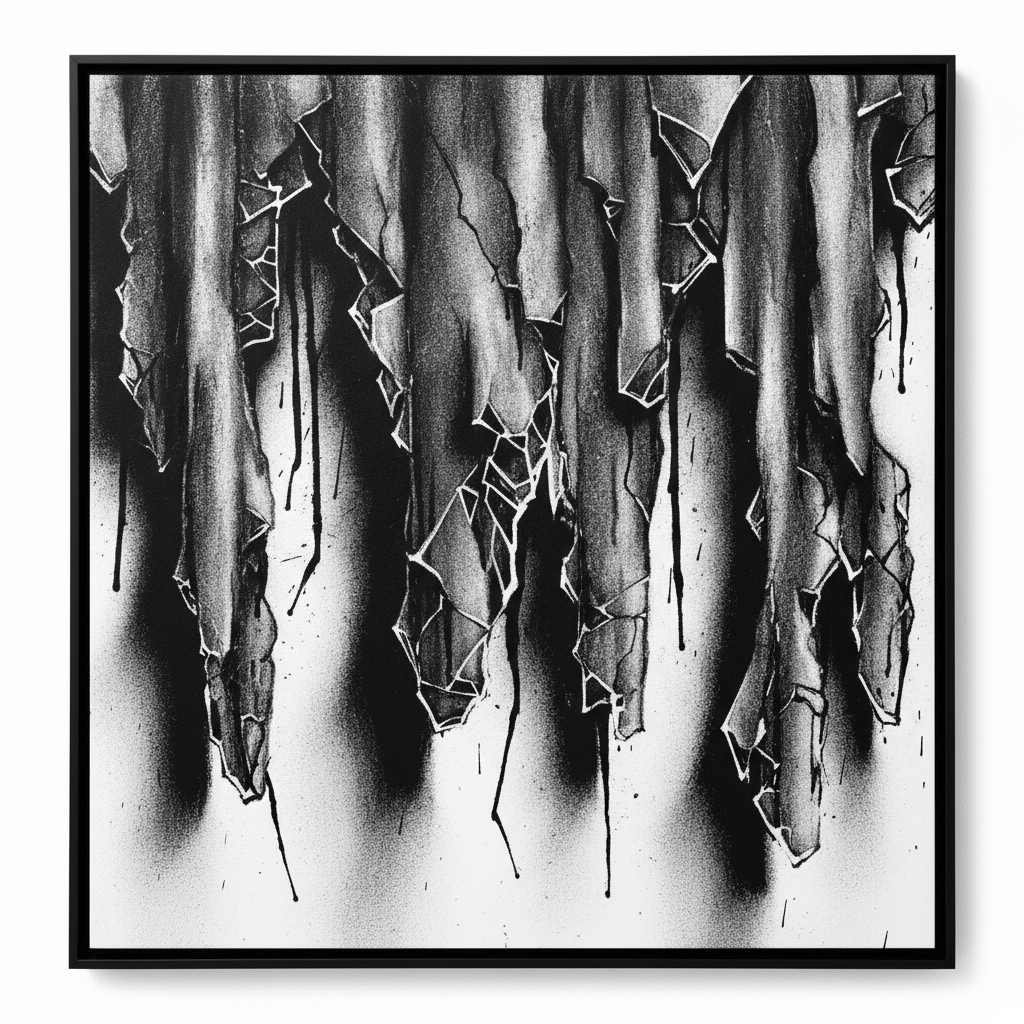
Enhanced Problem-Solving and Creativity
Regularly engaging in abstract drawing stimulates different parts of the brain, enhancing creativity and problem-solving skills. Artists constantly make decisions about composition, balance, and visual impact. This mental workout strengthens neural pathways associated with innovative thinking and visual organization. The open-ended nature of abstract creation encourages divergent thinking and a willingness to explore multiple solutions.
For many, the act of putting pen to paper (or stylus to screen) in a black and white abstract manner is not just about producing a piece of art; it’s about connecting with an inner self, processing experiences, and finding a moment of peace and creative liberation.
Conclusion
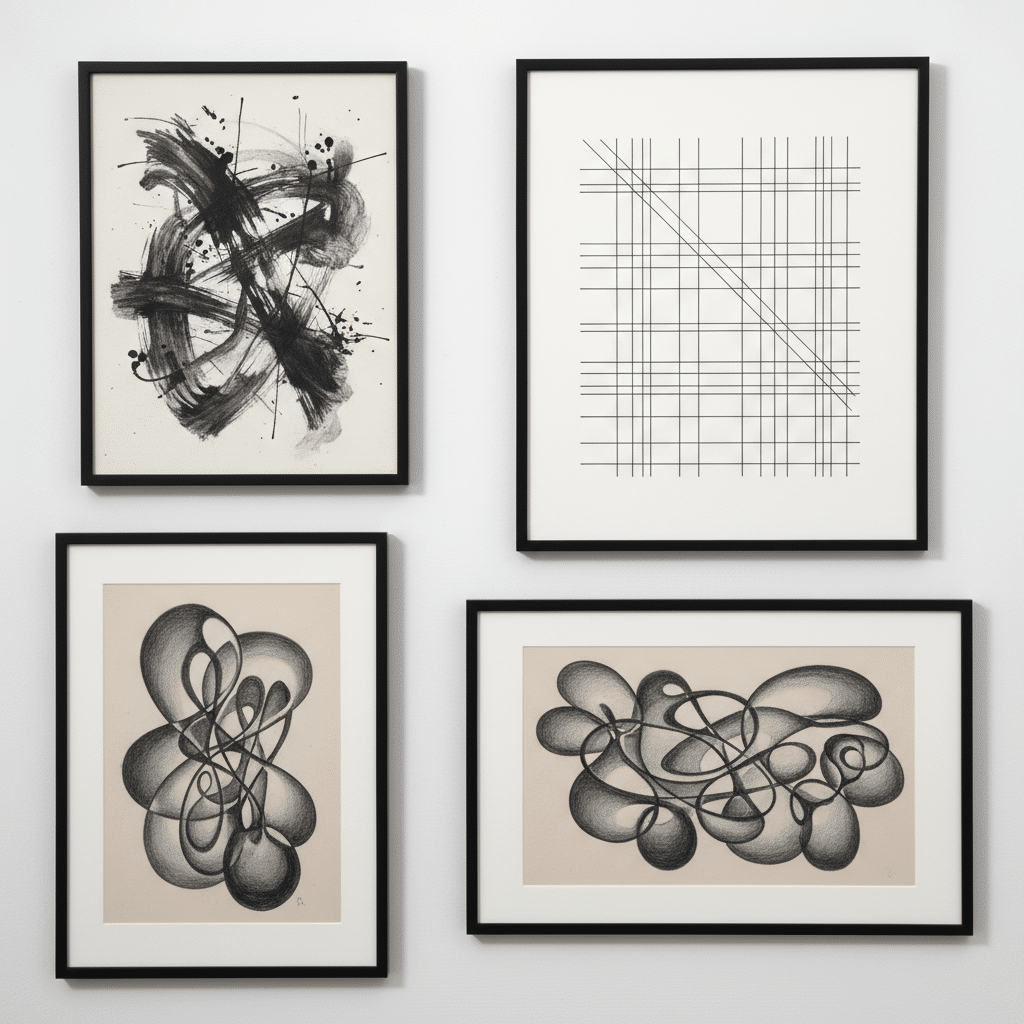
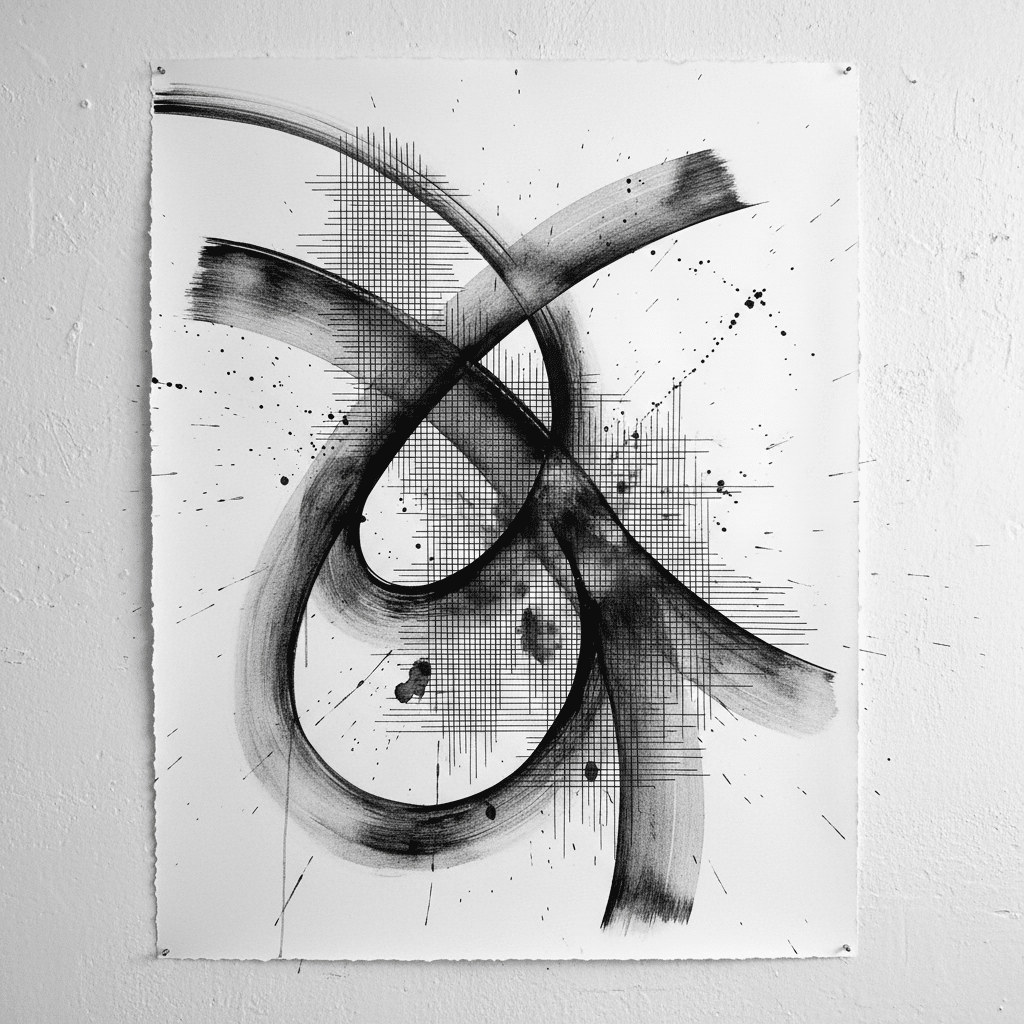
Black and white abstract drawings stand as a testament to the profound power of simplicity and contrast in art. By stripping away the myriad distractions of color, these works compel us to look deeper, to engage with the fundamental language of line, shape, texture, and value. They are not merely exercises in monochromatic aesthetics but potent expressions of emotion, intricate explorations of form, and timeless dialogues between light and shadow. From the dynamic brushstrokes of Abstract Expressionists to the meticulous grids of Minimalists, artists have continuously harnessed this limited palette to achieve unlimited depth and impact.
The enduring allure of black and white abstraction lies in its ability to transcend cultural barriers, its universal psychological resonance, and its remarkable versatility in contemporary design. Whether created with traditional charcoal or cutting-edge digital tools, these drawings offer a sophisticated focal point, adding elegance and intellectual depth to any space. Beyond their visual appeal, the process of creating them provides a therapeutic pathway to mindfulness, self-expression, and creative liberation.
Embrace the art of contrast. Explore the silent dialogue between black and white. Let its simplicity ignite your imagination and reveal the infinite complexities hidden within its stark beauty. Whether you are an artist seeking new modes of expression or a connoisseur appreciating visual poetry, the world of black and white abstract drawings offers an endlessly rich and rewarding journey. Take a moment to truly see them, and you may find they reveal something profound about the world, and perhaps, about yourself.
- 31shares
- Facebook0
- Pinterest31
- Twitter0

